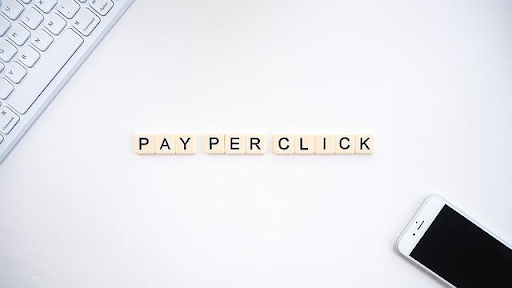

In the dynamic world of digital marketing, Pay-Per-Click (PPC) advertising is a pivotal tool for businesses seeking to amplify their online presence and drive conversions. As the digital landscape evolves, improving PPC conversion rates has never been more essential. This comprehensive guide delves into the intricacies of PPC conversion rates, offering insightful strategies to maximise their impact on your marketing campaigns.
PPC stands for pay-per-click, a model of digital marketing in which advertisers pay a fee each time one of their ads is clicked. Once you’ve clicked on an ad and arrived on the advertiser’s website, that click is called a conversion.
Whilst not all advertising platforms charge on a per click basis (e.g. Facebook (or Meta) bills on a per-impression basis), PPC is commonly used to describe all aspects of digital advertising.
At its core, the PPC conversion rate is a critical metric that measures the effectiveness of your online advertising efforts. It represents the percentage of users who, after clicking on your ad, take a desired action on your website, such as making a purchase or filling out a form. This rate directly reflects how well your ad resonates with your target audience and how effectively it drives them to act.
The PPC conversion rate formula is (Conversions/number of ad interactions) x 100 = conversion rate.
Calculating your PPC conversion rate is straightforward: divide the number of conversions by the total number of clicks and multiply by 100. For example, if you receive 10 conversions from 100 clicks, your conversion rate would be 10%.
The PPC conversion rate formula is (Conversions/number of ad interactions) x 100 = conversion rate.
Knowing your PPC conversion rates is pivotal in evaluating the success of your campaigns across search engines and social media platforms. It goes beyond click-through rates (CTR), providing a more comprehensive understanding of your ad’s performance. A high conversion rate indicates effective paid advertising, from campaign strategy to design and implementation.
Determining the average conversion rate of your PPC campaigns is essential for assessing their performance and identifying areas for improvement. Here’s a guide to understanding and analysing these crucial metrics:
Evaluating your landing page’s conversion rate and effectiveness is crucial in optimising your PPC campaigns. Here’s how to assess these key metrics:
A good conversion rate entirely depends on your industry, context, and the offer you’re presenting to your prospects. For example, you could offer free housekeeping services, and you’re likely to get close to a 100% conversion rate because why wouldn’t you take free services from someone?
However, if you’re in a situation where you don’t want to offer free services (I get you), then you should look to understand the context and the decision-making process your customer is going through to understand a good benchmark.
For example, The Garage Guys is a garage door business based in Sydney, and Evolving Digital has an equity stake (which is why we can disclose this data to you). For repairs and servicing-related keywords, our landing pages convert at upwards of 40% due to the urgency and immediate nature of a solution our prospect needs.
One of our fintech clients converts at around 10% for their Google Ads campaigns.
We have an e-commerce client that converts at 5% on average and another at 20%.
These are all good conversion rates for their verticals, and any generic PPC conversion rate resource you read online will likely be an aggregate of a huge data set that will not give you a clear answer.
The marketing medium also influences conversion rates; Paid Search is more likely to convert higher than Paid Social. With paid social, you are interrupting a user in their social browsing, versus someone who has gone to Google or Bing looking for an immediate outcome, inputed a specific search, to which your related ad appears.
When considering PPC conversion rates in Australia, it’s important to understand that these rates can significantly vary by industry. In general, PPC advertising is more effective in generating conversions than other advertising methods, such as organic advertising or SEO. In fact, PPC advertising can yield up to 50% more conversions and traffic than organic methods.
Looking at specific industries, the average PPC conversion rate across various sectors provides insightful benchmarks.
Industry benchmarks like click-through rates (CTR) and cost per click (CPC) are valuable metrics. For example, Google Ads across all industries have an average CTR of 3.52%.
> For instance, the Arts and entertainment industry has a high conversion rate of 13.41%, while sectors like Apparel, Fashion, and Jewelry experience lower rates, around 1.57%.
> Other notable industry conversion rates include Automotive Repair, Service, and Parts at 12.61% and Physicians and Surgeons at 13.12%. Notably, sectors like Furniture and Real Estate have lower average conversion rates, at 2.57% and 2.88%, respectively.
> Industries like Arts & Entertainment and Travel & Tourism can experience higher CTRs, around 9%.
While a high conversion rate is generally a good thing, it’s important to keep in mind that they’re contextual with many influencing factors:
If you’re selling a high-priced item, you may see a lower conversion rate than if you were selling a cheap item.
A Christmas-focused business will have a different PPC conversion rate to a year-round retailer.
Whether the user uses a desktop, tablet or mobile.
You'll find more information about AOV in FAQs. But as the name suggests, this is the average order value when someone clicks on your ad.
Several factors influence conversion rates, such as ad quality, relevance and targeting. However, here are some general ways to increase your PPC conversion rate.
Not all ad platforms work for all products and services. Identifying the right platform for your business is essential to ensure an impactful campaign and a good conversion rate.
To identify the best advertising platforms for your campaign, consider several key factors:
If your product or service is already well-known and people are actively searching for it, platforms like Google Ads or Microsoft Ads might be highly effective. These platforms are ideal for products and services with an existing search demand.
If you're introducing a new business, brand, or service that isn't widely known, you might benefit more from interruption-based advertising platforms like Facebook or other social media. These platforms are useful for generating awareness and reaching audiences that might not be actively searching for your product yet.
Assess what platforms your competitors are using. If most are using platforms like Google Ads, Microsoft Ads, Pinterest Ads, or Facebook Ads, it indicates these platforms are effective in your industry. However, there's also value in exploring less saturated channels where your competitors aren’t active.
Your advertising budget is crucial in platform selection. High CPCs (Cost-Per-Click) in competitive sectors can quickly exhaust budgets. For example, if you're spending $30 per click and have a $1,000 monthly budget, this can limit your campaign's reach and effectiveness. In such cases, platforms with lower advertising costs, such as Facebook Ads, might offer a better ROI.
Consider where your target audience spends their time and how they search for products or services. For instance, if your audience heavily relies on Google for searching products or services similar to yours, Google Ads might be the right choice.
By analysing these factors, you can more effectively determine which advertising platforms will best suit your campaign goals and audience.
Don’t send people to your home page. Your landing pages should be specific, and you should use the same offer on your ad and landing page. By sending visitors directly to a landing page created exclusively for the PPC campaign that brought them there, you can improve your conversion rate because the landing page is specific to the customer’s needs, increasing their chances of converting.
Enhance your conversion rate and PPC CTR with finely tuned landing pages. Here’s why:
Direct visitors to landing pages that mirror the specific offer in your ad. This coherence between your ad and the landing page ensures a seamless user experience, making it more likely for the customer to engage and convert.
Dedicated landing pages are tailored to meet the unique objectives of your PPC campaign. By aligning the page’s content with the customer's needs and expectations set by the ad, you significantly increase the chances of conversion.
Google AdWords favours ads linked to dedicated landing pages by offering better ad rankings. This is because these pages typically provide a more relevant and satisfying user experience, aligning with Google's goal of delivering useful content.
Including testimonials or reviews on your landing page is powerful social proof. This strategy builds trust and credibility, encouraging new visitors to make a positive decision based on others' experiences.
Remember, a dedicated landing page isn’t just a destination; it’s an integral part of your ad campaign’s narrative and success. By focusing on creating a clear, purpose-driven landing page, you’re setting up your PPC campaign for a higher success rate.
Effective keyword selection is crucial for refining PPC campaigns to ensure that your ads reach a targeted audience and increase the likelihood of conversions. Here are key points for effective keyword strategy:
A well-thought-out keyword strategy focuses not just on visibility but on connecting with the right audience to increase your average conversion rate and enhance the effectiveness of your PPC campaigns.
A clear Call to Action (CTA) is crucial in guiding your PPC visitors towards the desired action, whether it’s filling out a form or making a purchase. Utilise the insights gained from the training to craft CTAs that are not just instructions but compelling invitations. Place these CTAs strategically within your ad copy, landing pages, and even as website pop-ups to increase the likelihood of conversion. Remember, an effective CTA bridges the visitor’s interest and the action you want them to take.
Tailoring your PPC campaign to the right audience is vital for its success. Align your targeting strategies with your audience’s search behaviour, geographical location, income level, and other demographics. This precision in targeting ensures that your ads reach potential customers who are more likely to convert, thereby increasing your conversion rates, reducing CPA, and improving ad rank on search engines.
Segmenting your audience allows for more targeted and effective ad campaigns. Leverage customer keyword usage and location data to create segmented ad groups. This strategy leads to more personalised ad experiences and higher traffic quality and conversion rates. Audience segmentation is key in delivering relevant and compelling ads to different subsets of your target market.
Regular A/B testing is a powerful tool to identify the most effective elements of your PPC campaigns. Test variations of your landing pages, ad copy, and keyword strategies to determine which combinations yield the highest conversion rates. This practice is essential for continuously refining your campaigns and enhancing their real-time effectiveness.
Remarketing is an effective strategy to re-engage visitors who did not convert during their first visit. By targeting these potential customers with tailored ads and landing pages, you significantly increase the chances of conversion. As highlighted in the training, remarketing taps into an already interested audience, making it a cost-effective method to boost conversion rates.
Increasing your PPC conversion rate is a multi-faceted process that requires a deep understanding of your target audience, industry benchmarks, and the digital marketing landscape. By implementing these strategies and continually refining your approach, you can significantly enhance the effectiveness of your PPC campaigns, driving more meaningful conversions and ultimately boosting your digital marketing success.
For those looking to delve deeper into optimising PPC campaigns, partnering with a skilled PPC agency like Evolving Digital can provide tailored strategies and insights to achieve higher conversion rates and maximise online revenue.
Increase your PPC Converstion rate with us
Ready to increase your conversion rates and lower your ad spend? Contact us today!



ABOUT US
We’re not your standard digital marketing agency.
If you’re ready for your business to evolve, you’ve come to the right place
WHAT WE DO
GET IN TOUCH
© Copyright 2025 Evolving Digital